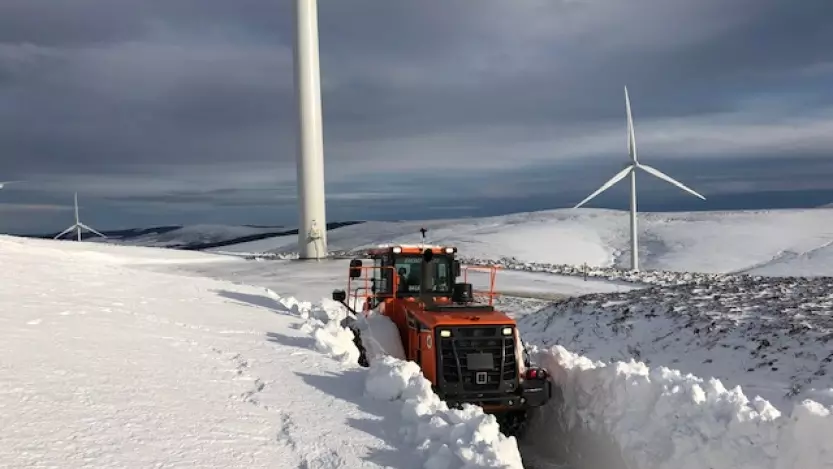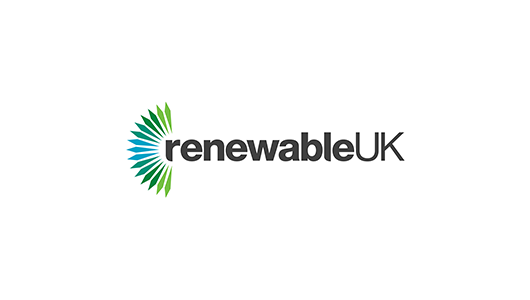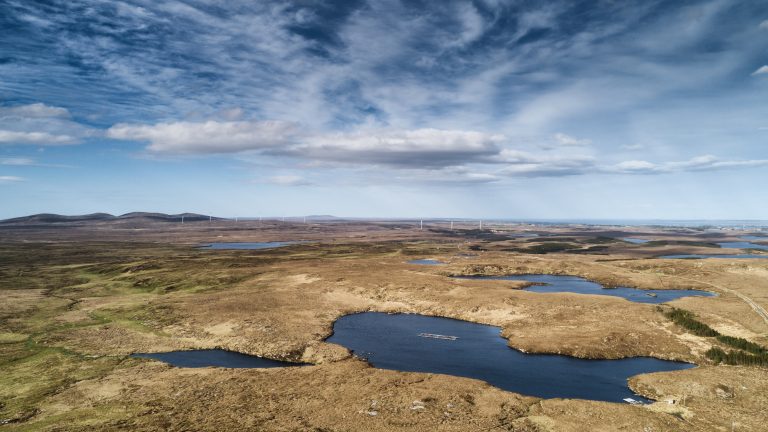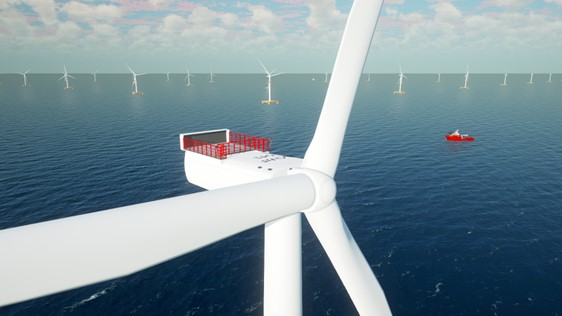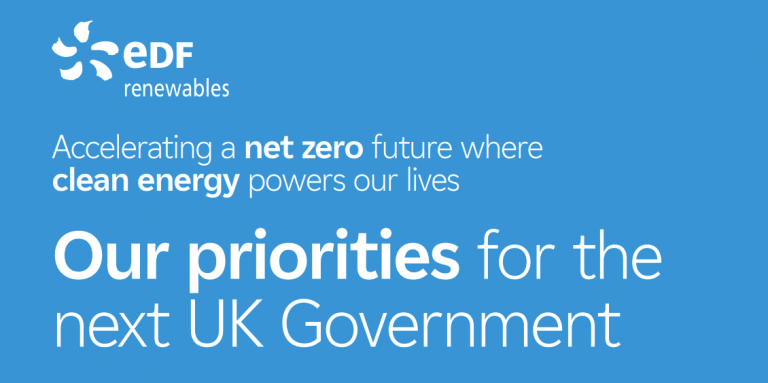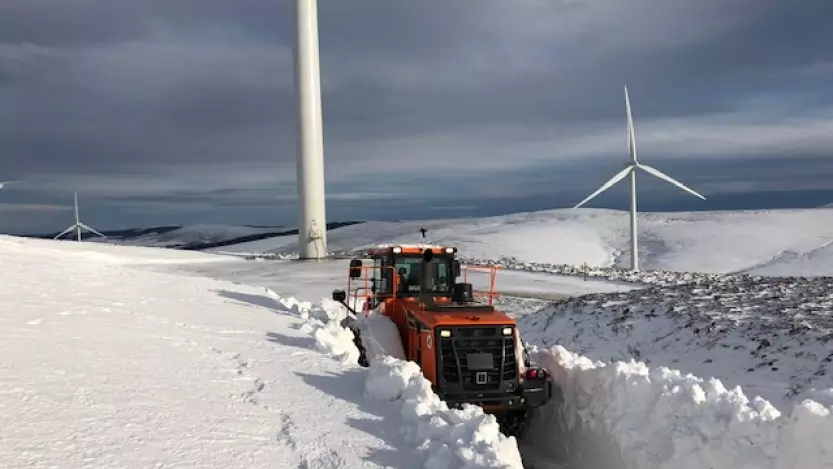
Snow can make building a wind farm tricky to say the least – especially as turbines are usually situated on high, exposed land to benefit from good wind speeds. It’s also not uncommon for it to snow from November through to April in those parts of Scotland where some of our wind farms are located.
So as the first snowflakes start to fall in Scotland, we caught up with Ian Graham, Head of Construction at EDF Renewables, to find out what impact snow has on building or operating a wind farm.
What’s the worst snow you’ve experienced on site?
The snow at Dorenell last year was pretty extreme – I’ve never seen anything quite as severe! We had a snow plough working to clear access, but the snow wouldn’t let up and there were limitations on where we could move it to.
Do wind turbines work in snow?
Yes. The only time they shut down is when the wind speed is either too low or too high. Snow build-up isn’t really an issue on the turbine performance, so they can still work in snowy conditions. But ice can be a challenge in cold weather. Turbine manufacturers offer ice detection systems, which shut the turbines down automatically if ice is detected. Ice can impact the turbine’s performance, but it could also create a safety hazard.
As well as ice detection systems, some innovative solutions for anti-icing are used in very cold locations, such as Scandinavia. For example, some blades come with a material that heats up to prevent them from icing. Other solutions include blowing hot air into the blades. The idea being that you avoid shutdown of the turbine in these conditions and increase your generation.
What are the challenges snow presents when you’re building a wind farm?
The challenges are focused mainly around access, as even just getting to site can be really difficult. A lot of the wind farms – like Dorenell – have really long access roads that take you to the site. And if these aren’t clear of snow, you’re not going to make it onto site. This remains a challenge in the operational phase.
Then even when the snow’s been cleared, you have to be wary of hazards. For instance a lot of our wind farms are on hills – for obvious reasons! So when we’re building the site, we make sure to think ahead about these types of challenges to ensure our wind farms are properly constructed and maintained throughout their lifetime.

What equipment do you have to help when there’s snow?
For safety, we have snow poles that mark out the road, so even when there’s been a heavy downfall you can still see the poles and identify the edge of the access road. Also, we implement a winter access procedure. This includes a contractor coming to site with a plough and whole raft of equipment to clear it when there’s been a downfall; as maintaining safe access is key. They’ll be on standby a lot of the time, but when they’re needed their services are invaluable.
And how do you ensure the safety of those working on site?
The environment on wind farms can change very quickly, particularly in the winter months at high altitude. When we built our Dorenell wind farm, we handed out emergency packs to the team on site. These were waterproof rucksacks containing essential survival kit, like food, torches and blankets. The idea being that if anyone was ever stranded on site, they could be as comfortable as possible until they were rescued.
Again, during the winter months we implement winter access procedures. And one of these is an evaluation of the site conditions first thing in the morning by the Site Manager, before others are allowed on site.
In bad weather conditions, communication is also essential. At Dorenell, for instance, there isn’t a strong phone signal across the whole site. So we use radios to make sure anyone working there can always be contacted.

What other weather conditions can prove challenge?
It’s not just snow, but heavy rain and even cold temperatures can make building a wind farm tricky. For instance, if you’re digging excavations for the foundations – or even the cable trenches – during heavy rainfall, water management can become an issue . The contractors need to use pumps to keep them clear – and these can be working pretty much constantly during bad weather.
How about high winds?
Yes. Although we want good wind speed when the wind farm is operating, high winds can prove challenging during the build – particularly when it’s time to install the turbines. We usually have two cranes to install the turbines on their foundations. But when the wind hits a certain speed, it’s too dangerous for the cranes to do any lifting.
Crane manufacturers are developing new technology to be able to lift in higher winds. But until then, we are presented with downtime until the wind reaches a safe level to start lifting. This is why, if possible, when we’re developing our construction programme, we plan for turbine installation to take place in spring and summer, when wind speeds are lower.
So how do you mitigate generally against bad weather?
Weather is unpredictable – as we all know – but the key is planning for it, so when it does come you’re ready. Our construction programmes assume a level of downtime due to weather during the build. For instance, when we’re agreeing a programme with the turbine manufacturer for installing the turbines, we use historical weather data and modelling tools to forecast how much extra time we need to allow for high winds.
When we built Dorenell, we assumed there would be up to three months each year when we wouldn’t be able to access the site due to bad weather. During our first winter at Dorenell (2017-2018), however, we experienced both “Beasts from the East” and actually lost more downtime than the three months we’d allowed for. But then the following year, we made up for this, as it remained relatively snow-free.
There are also strategic decisions you can make during the build. So at Dorenell, we started work at the furthest point of the site and then worked our way back to the access point. This meant that during the poorer weather conditions, we were working at turbine locations closer to the main access point and main welfare site.
And what about the other extreme … of hot weather?
Hmm, it’s not really a problem in Scotland! But I know from a previous job that hot weather can be an issue. I briefly worked on a project in Egypt when we had to look at cooling modifications to the turbine to avoid overheating. We also had to consider things like special vents to prevent sand from getting into the base of the foundation.
And, believe it or not, we do consider how to handle hot weather – even in places like Dorenell! This is because turbines can get hot and if technicians need to climb the turbine, it’s important they’re protected from overheating. So we ensure people are reminded of hydration and even given sun protection.

